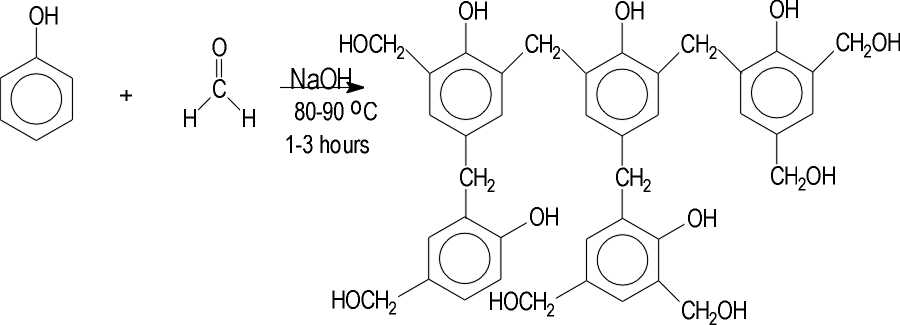Adhesives
Up until the early part of the twentieth century adhesives used in plywood
manufacture were available only from natural materials such as hide, bone,
casein, soybean, and other vegetables. These natural adhesives were
not very moisture resistant and while wonderful for indoor uses as one
can imagine that use of these materials outdoors resulted in outright
failure.
In the 1930's the intoduction of synthetic resins such as urea-formaldehyde
(while urea-formaldehydes see primarily indoor use) and phenol-formaldehyde
allowed greater applications in outdoor environments due to their greater
water resistance.
.
Phenol
and formaldehyde are typically formulated in a ratio of 1:1.2-3 and heated
in the presence of catalyst to form a low molecular weight polymer.

The
polymer precursor is then applied to the substrate and then heated to approximately
180oC and a crosslinked network is formed with methylene and
ether linkages.
Similar chemistries are used with urea, melamine, other phenols, formaldehydes
and other aldehyde derivatives under a variety of conditions.
Return
to plywood.
Return
to particle board.

